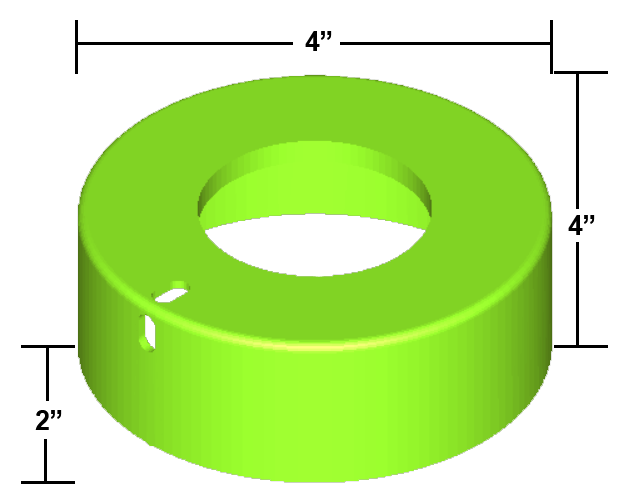he clamp unit of an injection molding machine is rated by the maximum amount of clamp force that the machine is capable of producing. Clamp force is required in order to keep the injection mold closed during the high-pressure injection molding process, which is the primary purpose of the clamp unit. Normally, the force rating is stated in tons. So, a specific machine having a rating of 200 tons is capable of producing a maximum clamping force equivalent to a total of 200 tons. So, how much clamp force is required?
The answer to this question depends on how much injection pressure is needed to inject a specific plastic material into a mold. This is determined by the viscosity (the thickness value) of the material. Viscosity is a value that must be correctly understood.
Injection molding---material flow ranges
Thicker materials require greater injection pressures and are difficult to flow. There are flow ranges in which each material will fall, and these can be classified as “high flow,” “average flow,” and “low flow.” The Melt Flow Index test determines the flow rate of any plastic, and this information is readily available on the material data sheets. These index numbers may range, for instance, from 5 to 20. The lower numbers signify that the specific material does not flow easily, so it would be classified as low flow. The higher numbers signify a material that flows very easily, so it would be classified as high flow.
It is not as important to remember a specific flow number as it is to know what range a material falls into; high flow, average flow or low flow. Then, understanding that it requires more injection pressure to inject a low flow material than a high flow material, it is understood that a low flow material will require much more clamp force to keep the mold closed against that higher injection pressure.
A product molded of polycarbonate (a low flow plastic) may require an injection pressure of 15,000 psi, while that same product molded of acetal (a high flow plastic) may require only 5,000 psi. Therefore, the polycarbonate product will require a clamp force on the mold that is approximately three times higher than for the acetal product.
Determining projected area
Projected area is calculated by multiplying length times width. The method used for determining the required injection mold clamp force is to take the projected area of the part to be molded and multiply that number by a factor of 2 to 8.
Here’s an example: Let’s say we have a part that is 6″ long by 6″ wide. The depth dimension is only important if it is more than 1 inch (this will be explained later). So, for this particular product, the projected area is determined by multiplying 6″ times 6″. The result is an area of 36 square inches.

The injection mold clamp force requirements can now be calculated by multiplying the 36 square inches by a factor of 2 to 8 tons per square inch. The lower numbers can be used for high flow materials, and the higher numbers can be used for low flow (stiff) materials.
For this example, polycarbonate has been selected as the material for molding. Polycarbonate is fairly stiff and a lower flow material, so the injection mold clamp factor used must be towards the high side. Experience has shown that an injection mold clamp factor of 5 tons per square inch is adequate for polycarbonate. That means that the 36 square inch projected area found above must be multiplied by the injection mold clamp factor of 5 tons per square inch, to result in a total injection mold clamp tonnage requirement of 180 tons (36 x 5 = 180). There should be a safety factor of 10% added, so the final injection mold clamp force needed is 198 tons. The machine with the closest rating for this product would be a 200-ton machine.
This piece is 4 inches long and 4 inches wide. That gives us 16 square inches. We are using a fairly stiff material so we will multiple 5 tons by 16 and get 80 tons. Since our part is 2 inches deep we have to add 10% for every inch over the first one. So we need to add an additional 8 tons for a total of 88 tons. For safety we add 10% of our new total for 96.8 tons. So that means the machine should have a minimum clamp force of 100 tons to make our part.
It must be noted that these numbers are only correct if there is a shutoff land surrounding the part. If that land does not exist, the injection mold clamp tonnage will have to be doubled, tripled, or even more! This may result in mold damage, machine damage, and longer cycle times. (See our Glossary for the definition of a shutoff land.)
Summarizing, the total injection mold clamp force required for a specific product is determined by finding the projected area of that product [projected area = length x width] and multiplying that area by an injection mold clamp factor of between 2 and 8. If in doubt, use 5 [projected area x 5 = injection mold clamp force required].
How getting a accurate tonnage calculation to save your money?
Contact Shine to get the answers:


 English
English Français
Français Español
Español









